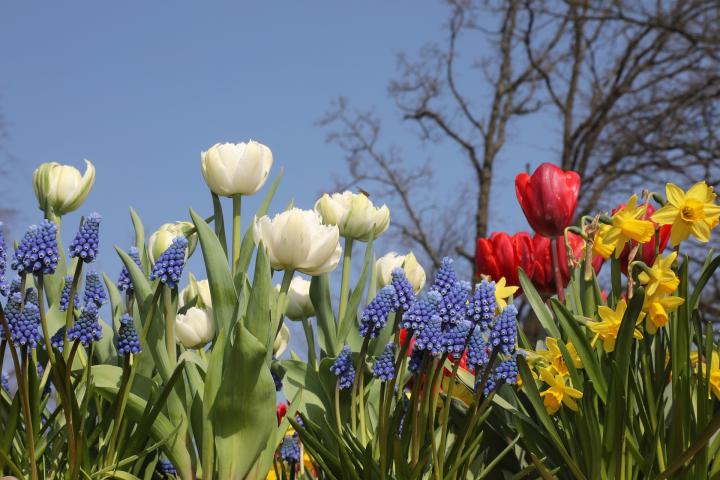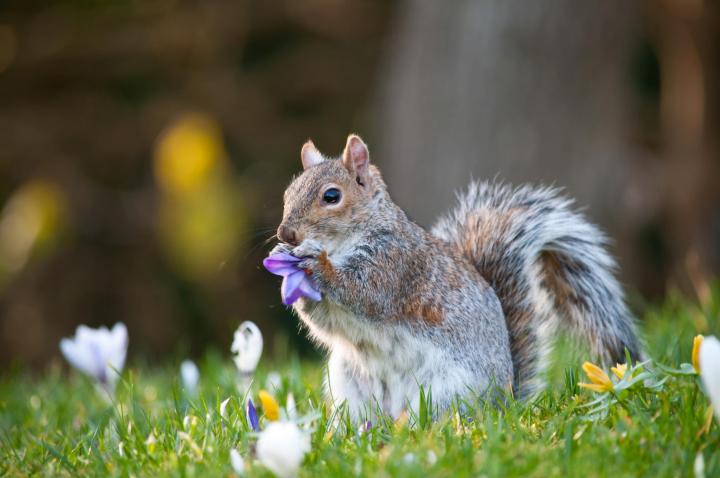Body
Wondering why your tulips and daffodils didn’t flower? Are the squirrels and rodents eating your flower bulbs? Do you know what to do with bulbs after they bloom? Let’s look at common problems—and how to keep bulbs coming back year after year.
Advertisement
Tips on Planting Bulbs
-
Buy the right varieties for your area’s USDA Climate Zone. For reference, see our bulbs charts:
-
Use top-quality bulbs. All bulbs are NOT the same. Check bulbs before buying or planting: Make sure they’re firm and free of corky lesions, mold, and soft spots. Otherwise, your bulb may have a viral disease before you even get home!
-
Don’t plant your bulbs where you always see standing water in early spring. They like well-drained sites.
-
Don’t plant in soil where disease has been a problem.
-
Make sure your bulbs get full sun. Bulbs need at least a half a day of sun in spring while the bulb leaves are green. Midday and afternoon shade are needed in hot climates.
-
Turn the soil over to a depth of about eight to ten inches. Add enough compost to make it loose and crumbly.
-
Very important: Plant at the right depth!! As a general rule: Plant daffodils, fritillarias, hyacinths, and tulips, plant six to eight inches deep. Plant crocuses, snowdrops, Spanish bluebells, and other small bulbs 3 to 4 inches deep.

Protect Bulbs from Rodents
Mice are the most common rodent to eat flower bulbs, but squirrels, chipmunks, and voles also enjoy these tasty snacks. (Note: Moles do not eat bulbs, though their tunnels may disturb plantings.)
The easiest solution is to plant “stinky” bulbs that rodents dislike such as daffodils, allium, and snowdrops. Avoid tulips and crocus as well as gladioli. You could also try interplanting.
Otherwise, the solutions are either barriers or repellents:
-
In terms of barrieres, use chicken wire to construct a cage that you can place your flower bulbs in. If you are planting many bulbs at one time, you can lay down a wide wire mesh, such as chicken wire, directly on top of the bed, extending the surface about 3 feet from the plantings, then stake it down.
-
Another barrier is sharp-edged gravel which you can lay below and above your bulbs when you plant. Kitty litter is another option.
-
Some gardeners claim that planting a bit deeper makes it harder for digging pests to find tulip bulbs. Also, always remove all debris such as dried bulb casings to avoid pests.
-
The most common repellent is blood meal which repels rodents. Sprinkle around bulbs.
-
Spread animal urine around the garden (which can be bought at a plant store); human or animal hair works, too (visit a barber!).
-
Powdered or liquid chili pepper is another natural deterrent, though it needs to be replaced periodically and after rain.

Image: Squirrel eating purple crocus flower. Credit: James Hudson/Shutterstock
Tips on Bulb Plant Care
- Always water your bulbs after planting to jump-start root growth.
- Keep bulbs mulched to conserve soil moisture and maintain a cool soil temperature. But hold off on mulching until the ground is cold or frozen. Piling on mulch too soon provides nesting areas for pests to overwinter.
- Fertilize at planting and during spring growth period. Specifically, add a balanced natural organic fertilizer in the spring when the bulbs first appear and again after they have bloomed. We don’t think it’s necessary to add fertilizer to the bulbs as you plant them (though some gardeners do), but you need to help them recharge their food banks after they have bloomed.
- Cut off the spent flower heads after your bulbs have bloomed, but don’t cut off the foliage. The leaves help provide nutrients to what will become the next season’s bulbs.
Specific Bulb Problems and Solutions
- Bulbs being dug up? You can usually thank squirrels or chipmunks. They especially love eating the crocus, hyacinth, and tulip bulbs. As discussed above: Before planting, place hardware cloth, chicken wire, or other protective barrier over soil, and secure it in place.
- Bulbs simply disappearing and never emerging? Chipmunks, voles, gophers and mice plant daffodils especially like crocus and tulips bulbs. Plant in a chicken wire cage or consider planting daffodils, which animals find inedible.
- Are they emerging even though winter isn’t over? This is normal and due to a warm spell. As long as there isn’t a blossom, they’ll probably be fine. they should weather the winter fine. Be sure to mulch your beds.
- Are the bulbs’ leaves or buds or blossoms being eaten? You can once again thank squirrels and chipmunks but also deer and rabbits. The best solution is to plant daffodils. However, you could also use animal repellents.
- Just leaves, no flower bloom? The usual reason is lack of chill hours. In warm climates, choose varieties with low chilling requirements, and chill bulbs before planting. Another reason is pulling the leaves before they faded completely.
- Fewer blossoms or smaller flowers than last year? Bulbs will decline if they experience overcrowding, poor soil fertility, or increasing shade. If overcrowded, dig and divide them the bulbs as the foliage begins to die. Lift the entire clump and pull apart the bulbs that separate easily. (Never cut the bulbs.) Then replant to a new location.
A lack of bloom often speaks to a lack of soil fertility. In the spring, when plants are growing, spread an inch of compost. Or apply a low-nitrogen bulb fertilizer. You’ll get bigger, better blooms!
What to Do With Bulbs After They Bloom
Rule #1: After bulbs flower, NEVER cut their green leaves to the ground. Leave the leaves to photosynthesise and feed the rest of the plant for next year’s bloom. Wait until the leaves yellow and fall back naturally.
- Tulips: However, do remove the dead blooms immediately after the flower fades if you want a good bloom next year. Just pinch off the dead flower. Same goes with grape hyacinth.
- Daffodils: It’s not necessary to deadhead but it certainly helps so that the plant doesn’t waste energy by making seed heads, returning that energy to the bulbs to prepare them for next year’s blooms.
If the yellowing stems bother you, rest assured it will only continue for about 6 weeks. Some gardeners will trim the top half of the leaves off. We prefer to simply “hide” the stems by interplanting the bulbs with quickly-growing perennial plants.
- Great candidates to grow with bulbs are: peonies, day lilies, saliva, hostas, lupines, coral bells, sedum, and ornamental grass
- Low, quick-growing candidate are: creeping phlox, dianthus, and candy tuft.
Just remembe: If the leaves are green, leave them be!
See our individual Bulb Growing Guides for more information.













Comments